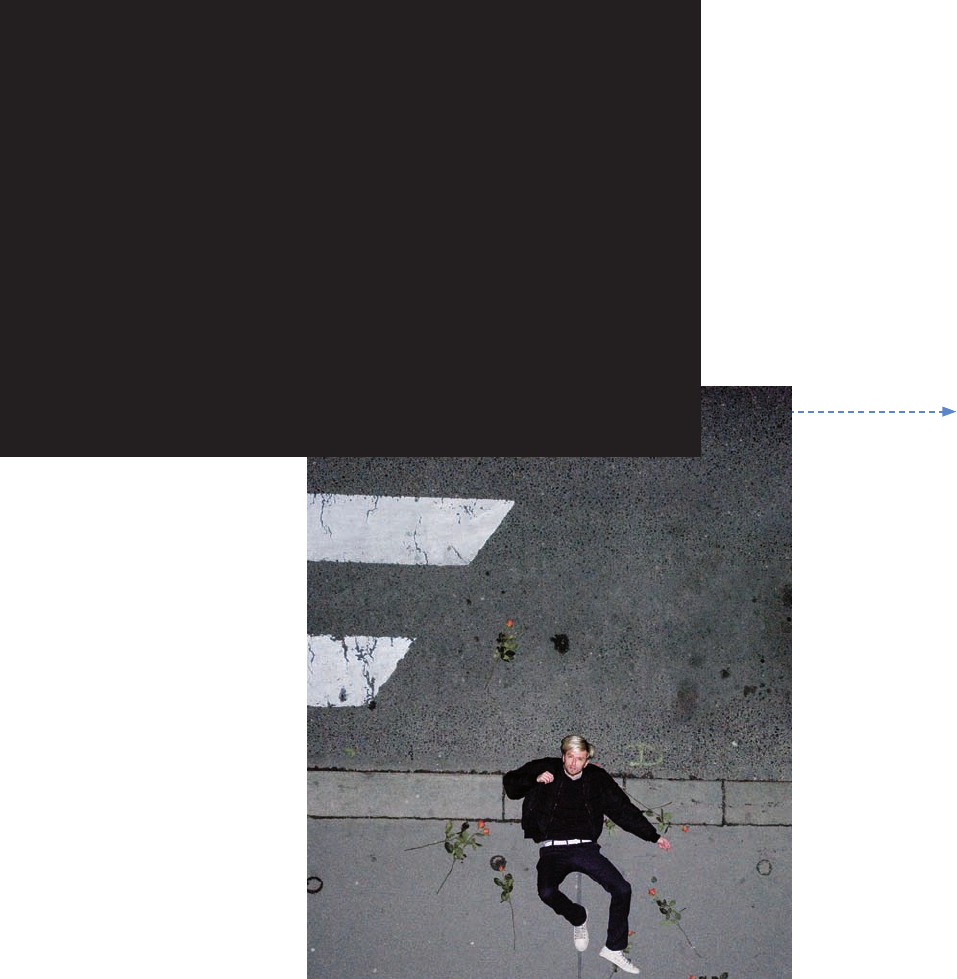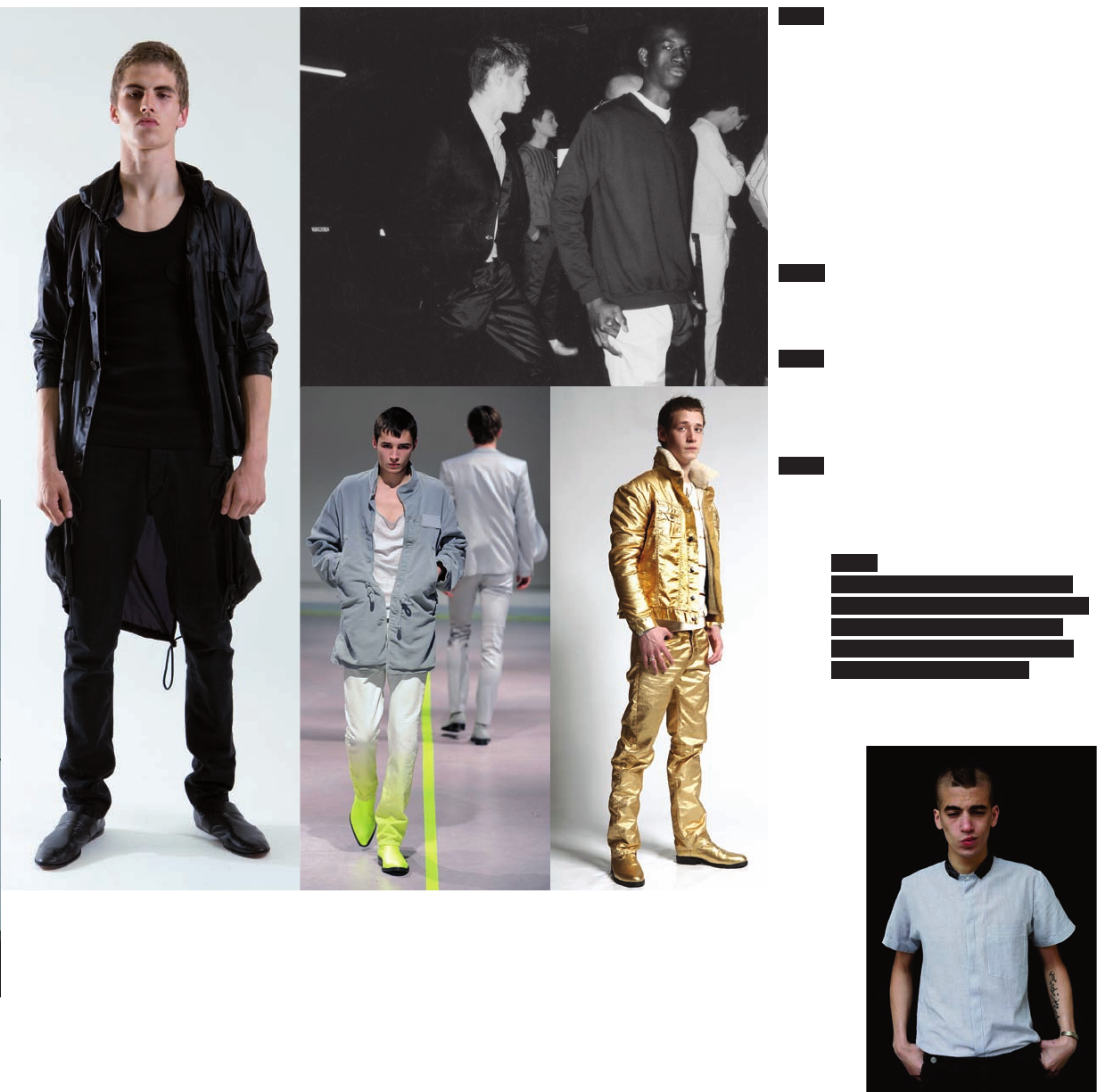
Petar Petrov 221
068
TFD_libro.indb 221
26/11/09 16:54:16
Bulgarian Petar Petrov
is based in Vienna
where he studied at the
Fashion Department
of the University of
Applied Arts. He has
had his own menswear
label since June 2002,
and since June 2004
Petrov has managed
to remain an official
regular during the
Paris Men’s fashion
shows. In January
2007 he launched his
rst womenswear
collection. Both lines
develop closely to each
other, working with
the same inspirations
with the aim to create
an aesthetical image,
distanced from any
ideological concepts. It
is about contrast, the
mix between high and
low culture, elegance
and street life. The
style is elegant without
being well groomed and
stylish, without trying
too hard, and intrigued
by cultural differences
and cultural force–the
purity and simple
aesthetic of forms mixed
with the activity and
vitality of life itself.
Petar Petrov
www.petarpetrov.com
© York Weissmann
TFD_libro.indb 221 26/11/09 11:39:13

TFD_libro.indb 222
26/11/09 16:54:17
671 INSPIRATION. When I design I
think about the many different people who
might wear it, who have their own style,
and who like being casual but at the same
time sophisticated. When I design even
the simplest piece, I make sure it is always
a special item, one that has the right
composition of material design to ful ll the
person wearing it. I like my pieces to be
unique and therefore that is what I think of
every time I design one.
672 D
EVELOPING A COLLECTION. I work
intuitively. I design many different items
at very different moments. In the end, to
put together a collection I put the pieces I
am most satis ed with. These items evolve
differently from one to another and once
an item pleases me, it inspires me for the
next one, and so on. In the end, I think
this is how I would de ne the concept of
a collection, a related evolution of items,
correlating to each other.
673 M
ATERIALS. I choose fabrics
because I like them. I also choose them for
their quality and even their innovation.
I buy fabrics from all over the world. I
always like experimenting with fabrics.
Regarding the types…never say never.
I think that everything can be used in a
collection–it only needs to be placed in the
right context.
674 T
RADITIONAL MANUFACTURING VS.
EXPERIMENTATION. I work with a mixture
of traditional tailoring and experimental
techniques. I think that every item needs
to be representative.
675 I
NDIVIDUALITY VS. GROUP BELONGING.
Both. Every item is a product. Some are
more special than others but at the end
of the day the aim is that all pieces are
wearable and that they are a part of the
collection in some way. This is the most
difficult part of the creative process.
222 1,000 Ideas by 100 Fashion Designers
TFD_libro.indb 222 26/11/09 11:39:13

Petar Petrov 223
TFD_libro.indb 223 26/11/09 16:54:26
676 COMMUNICATION. Of course
it’s important, but I’m not involved
in it. I have people that work directly
with me and that help me take care
of it. Communication nowadays is
very important because somehow it
becomes the image of the brand. The
more you are out there, the more people
want you. Unfortunately this is how it
works. Therefore, as a business person,
communication is essential.
677 E
VOLUTION. I’m never satis ed with
the result and I really try to make it better
next season.
678 S
TREET FASHION VS. FASHION
DESIGNER. Somehow both. The designers
try to form the spirit of the street but the
street re ects on the designers too.
679 G
OOD HABITS. A combination of
creativity and exibility.
680
S
ALES. I hope that people wear my
clothes and this is of course re ected
in the sales but it doesn’t exactly
have a bearing on the creativity, it
functions more as feedback.
TFD_libro.indb 223 26/11/09 11:39:13
Get 1000 Ideas by 100 Fashion Designers now with the O’Reilly learning platform.
O’Reilly members experience books, live events, courses curated by job role, and more from O’Reilly and nearly 200 top publishers.

